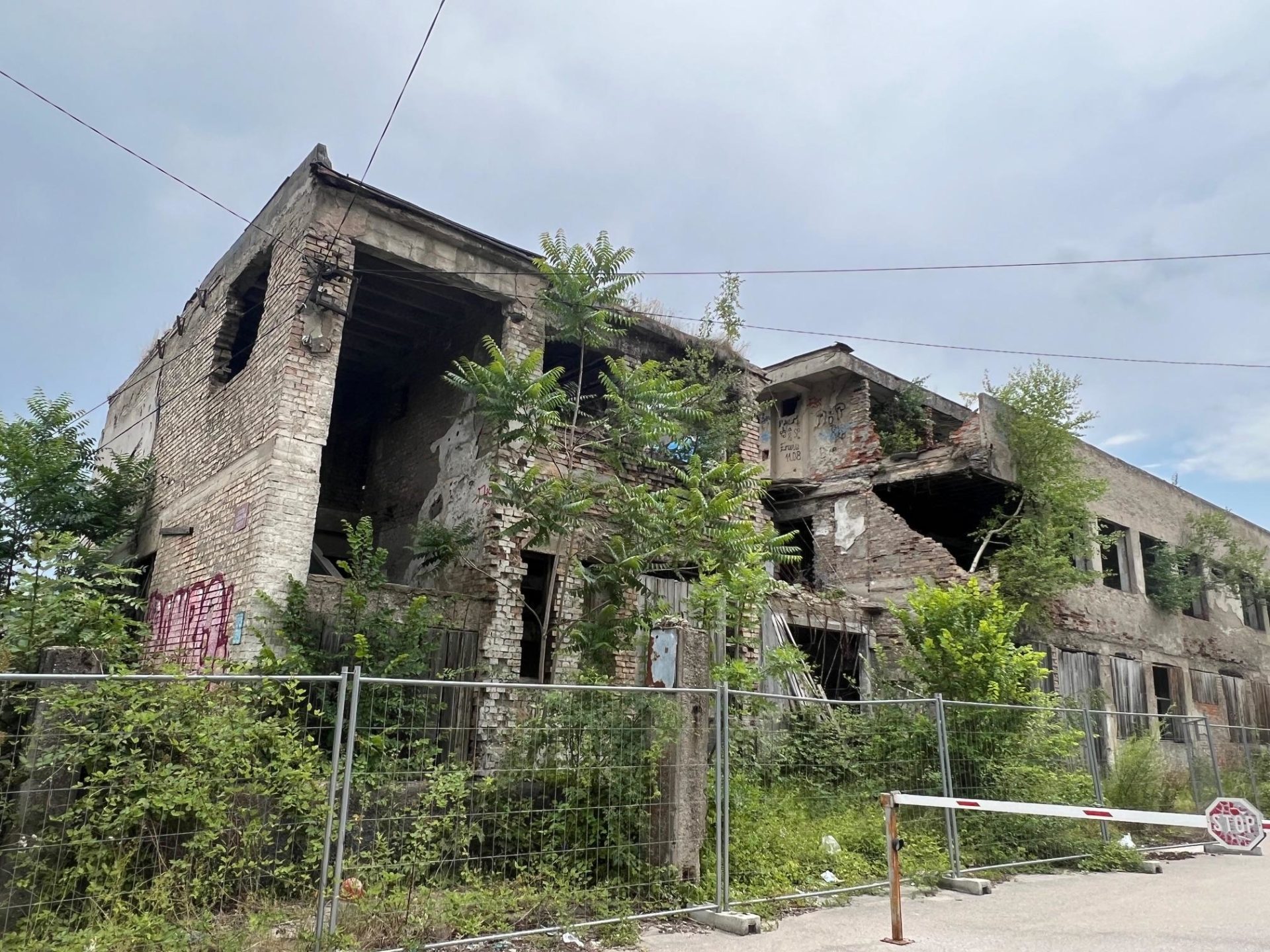

What do you do when you live in a city struck with an average of 300 mortar shells each day for 1,425 days and at least 500,000 bombs dropped, with snipers in tall buildings that made every nook and cranny unsafe?
A recent trip to Sarajevo, the capital of Bosnia and Herzegovina on the Balkan Peninsula in southeastern Europe, took me to the War Tunnel Museum and other sites associated with the nearly four-year siege of Sarajevo from April 1992 to February 1996.
So far, 11,541 civilians, including 1,601 children, have been documented as having been killed, and more than 50,000 injured in that conflict.
According to tour guides Edin and Ejub, the primary targets were schools, hospitals, churches and residential buildings. They emphasized that it wasn’t war but a mass murder, a genocide.
Going around the city center, we saw that several buildings still bore bullet holes. On Kosevo Hill, looking at the ruins of a maternity hospital can give you goosebumps as you imagine the newborn babies or mothers about to give birth who were killed, er, massacred in 1992.
The babies who were rescued from the maternity hospital were transferred to the Kosevo clinic, which was also shelled.
A memorial wall listing the names of the 11,541 casualties at the entrance of the War Tunnel Museum included those born and died in 1992. Ejub surmised that they could have been those killed in the maternity hospital.
The first shelling of the busy Markale Market on Feb. 5, 1994 by Bosnian Serb forces resulted in 68 deaths and the wounding of 142 Sarajevans, and the second attack on Aug. 28, 1995 killed 43 more and injured 84.
The siege of Sarajevo began right after Bosnia and Herzegovina received international recognition on April 6, 1992, following the dissolution of Yugoslavia. It has been recorded as the longest siege in modern European history through the 20th century, followed by the 872-day siege of Leningrad by the Nazis during World War II.
It was also in Sarajevo where the First World War began, triggered by the assassination of Archduke Franz Ferdinand, the heir presumptive to the throne of Austria-Hungary, and his wife Sophie, on June 28, 1914. Gavrilo Princip, a 19-year-old Bosnian Serb activist belonging to a Bosnian secret society called Black Hand Gang, shot at the couple, who were visiting Sarajevo.
Historical accounts say the Austro-Hungarian government used the assassination as a pretext to mobilize against Serbia, leading to the Austrian army’s invasion of Serbia. This, in turn, led to the formation of military alliances throughout Europe, and because European countries had colonies around the world, the conflict spread globally.
Almost 30 years after, Sarajevo’s battle scars are still all over the place. Apart from the bullet holes on the walls of buildings and the ruins of structures, I saw some old women with apparent mental disorders roaming the streets, murmuring words about a conflict.
A middle-aged woman at a supermarket recalled how Sarajevans survived almost four years without electricity, with limited water and food supplies.
Tour guide Ejub said the 800-meter-long tunnel was built in 1993 when Sarajevans were nearing starvation. Now known as the Tunnel of Hope, it connected the city to the airport, which was then controlled by the United Nations, allowing the movement of supplies to the people. The UN managed to organize humanitarian relief, which is said to be the largest airlift in world history, involving more than 12,000 flights and at least 20 countries.
Sarajevo is sometimes considered the Jerusalem of Europe, or the Jerusalem of the Balkans, due to its long history of religious and cultural diversity. In the city center, the 16th-century Gazi Husrev-beg Mosque, the largest Serbian Orthodox Church (Cathedral Church of the Nativity of the Theotokos), the Orthodox Jewish Synagogue and the Catholic Sacred Heart Cathedral stand just a few meters away from one another.
Almost 30 years after the devastating conflict in Sarajevo, I felt safe going around, as well as in the cities of Konjic and Ljubuski and Mostar. Tourists from all over the world are all over the bustling cities, which are surrounded by picturesque mountains and dotted with colorful gabled houses.
The short trip to Sarajevo and other cities of Bosnia and Herzegovina showed how armed conflicts can be destructive. The devastation continues to impact the country and its people in many ways, including issues in helping victims deal with lingering trauma. Despite all the odds, Bosnia and Herzegovina is showing signs of recovery. Hopefully, the road toward genuine and lasting peace apparently will soon be paved.
Sarajevo Mayor Benjamina Karic was right when she said that once you taste the charms of the city, you will wish to come back. And I feel lucky to have tried sipping from the fountain next to the Gazi Husrev-beg Mosque. She said that legend has it that those who do would return to the city to enjoy the “inexhaustible well” of Sarajevo.
*I went to Bosnia and Herzegovina with three colleagues from VERA Files for the 11th International Fact-Checking Summit on June 26 to 28, organized by Poynter’s International Fact-Checking Network with local media partner ZastoNe.
READ: https://verafiles.org/articles/fact-checkers-unite-vs-disinfo-peddlers-censorship, https://verafiles.org/articles/global-fact-11-fact-checking-supports-free-speech-not-censorship,


